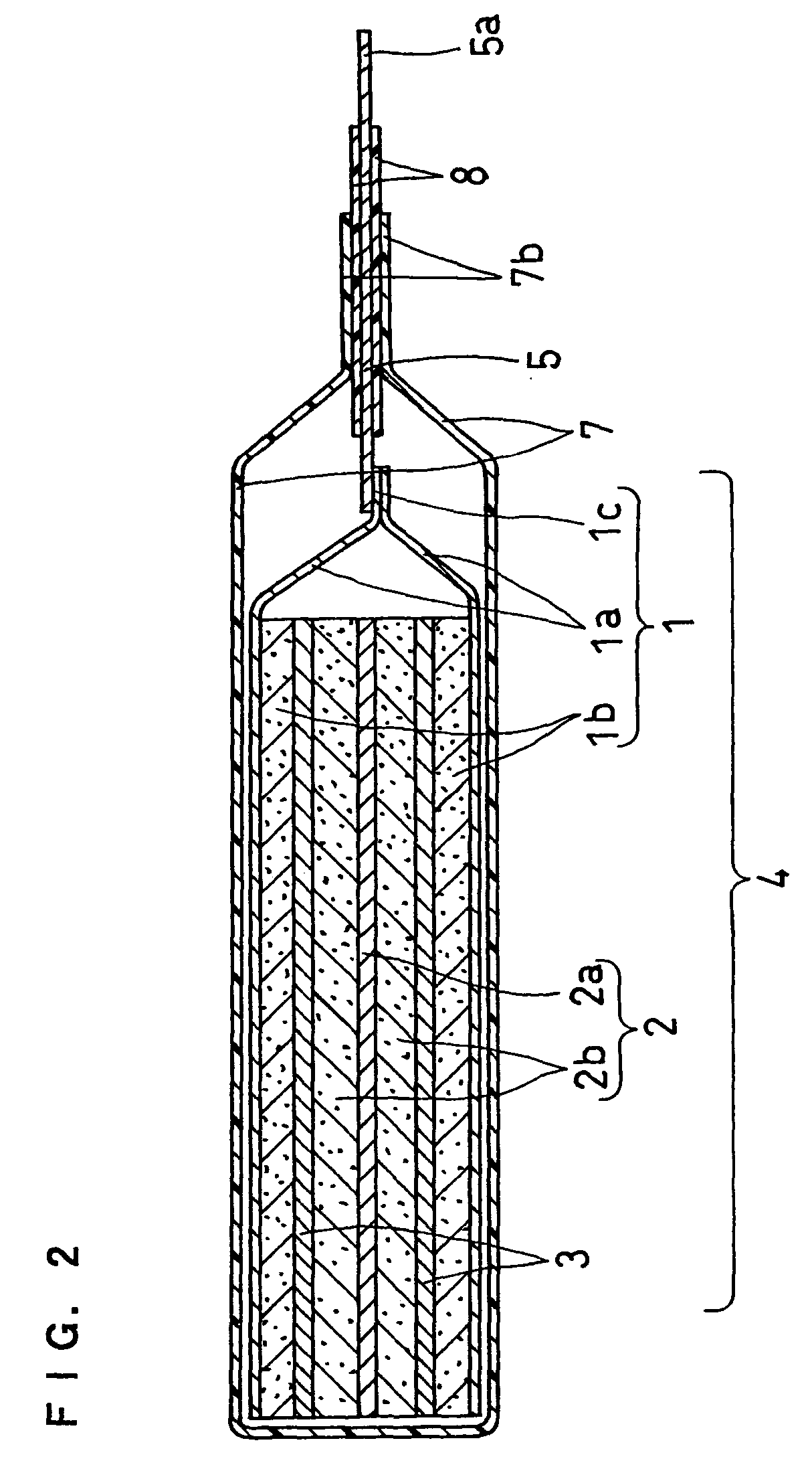Non-aqueous electrolyte and non-aqueous electrolyte secondary battery
a technology of non-aqueous electrolyte and secondary battery, which is applied in the direction of non-aqueous electrolyte cells, cell components, electrochemical generators, etc., can solve the problems of deterioration of charge and discharge characteristics, increase in battery thickness, leakage of electrolyte, etc., and achieve excellent cycle characteristics, capacity retention ratio and storage characteristics, and reduce the amount of gas
- Summary
- Abstract
- Description
- Claims
- Application Information
AI Technical Summary
Benefits of technology
Problems solved by technology
Method used
Image
Examples
example 1
[0056]A mixed solvent comprising ethylene carbonate (hereinafter referred to as EC), ethyl methyl carbonate (hereinafter referred to as EMC) and diethyl carbonate (hereinafter referred to as DEC) in a weight ratio of 4:5:2 was prepared. A non-aqueous electrolyte was obtained by adding 2.0 parts by weight of propylene carbonate (hereinafter referred to as PC) and 4.0 parts by weight of 1,3-propanesultone (hereinafter referred to as PS) to 100 parts by weight of this mixed solvent and further dissolving therein 1.35 mol / L of LiPF6 as a solute.
example 2
[0060]A non-aqueous electrolyte was obtained by adding 0.5 parts by weight of vinylene carbonate (hereinafter referred to as VC) and 0.1 parts by weight of diphenyl disulfide (hereinafter referred to as DPDS) to 100 parts by weight of the same mixed solvent as in Example 1 and further dissolving therein 1.35 mol / L of LiPF6 as a solute.
example 3
[0061]A non-aqueous electrolyte was obtained by adding 0.5 parts by weight of VC and 0.1 parts by weight of di-p-tolyl disulfide (hereinafter referred to as DTDS) to 100 parts by weight of the same mixed solvent as in Example 1 and further dissolving therein 1.35 mol / L of LiPF6 as a solute.
PUM
| Property | Measurement | Unit |
|---|---|---|
| particle size | aaaaa | aaaaa |
| size | aaaaa | aaaaa |
| porosity | aaaaa | aaaaa |
Abstract
Description
Claims
Application Information
 Login to View More
Login to View More - R&D
- Intellectual Property
- Life Sciences
- Materials
- Tech Scout
- Unparalleled Data Quality
- Higher Quality Content
- 60% Fewer Hallucinations
Browse by: Latest US Patents, China's latest patents, Technical Efficacy Thesaurus, Application Domain, Technology Topic, Popular Technical Reports.
© 2025 PatSnap. All rights reserved.Legal|Privacy policy|Modern Slavery Act Transparency Statement|Sitemap|About US| Contact US: help@patsnap.com



